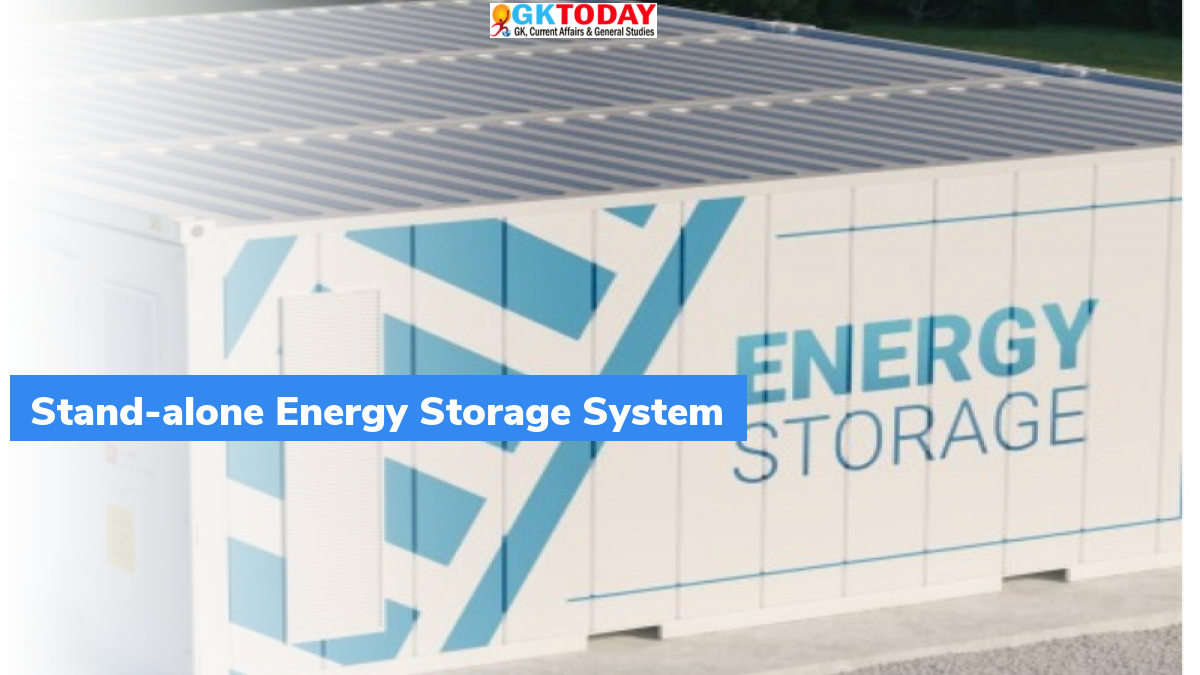Stand-alone Energy Storage System
Union Minister for Power and New & Renewable Energy R K Singh announced government’s plan to de-license “stand-alone Energy Storage System”.
Key Facts
- Now, people may be free to set up standalone energy storage systems (ESS).
- Elements of draft policy on energy storage system was discussed with renewable energy developers, industry and government representatives.
About the draft policy
- The draft policy on the energy storage system seeks to promote large scale creation of storage systems in India.
- Policy further aims to create technology-agnostic storage system in the value chain of electricity sector at generation, transmission and distribution levels.
- As per proposed policy, ESS developer will be granted inter-state transmission system connectivity under general network access (GNA). Thus, it will allow to sell or purchase power from any part of India.
Significance of the energy storage system
Energy storage system (ESS) will be an integral part of power system under Electricity Act. This system will benefit electricity generating companies, distribution companies, grid operators and other players in electricity value chain. It will facilitate peak shifting, ramp-up or ramp down, peak shaving and frequency control in system. It will also enhance the utilisation of transmission system. This system is essential for a smooth energy transition from coal-based to renewable sources towards a cleaner environment. Storage will be part of the renewable purchase obligation (RPO).
Renewable purchase obligation (RPO)
For storage purpose, ESS Quantum will be included with round-the-clock (RTC) renewable energy will be counted as RPO. Renewable energy certificates (RECs) will also be issued to ESS.
Sale of electricity
Sale of electricity from storage and sale or lease of storage space can be made through open competitive bidding or power exchange or tariff fixed under Section 62 of Electricity Act. As per policy, transmission cost for RE will be waived both at the time of charging the storage and selling the stored RE.
India’s energy transition
India has prepared for energy transition from fossil fuel to non-fossil fuel-based energy systems. It aims to reduce GHG or CO2 emission by one billion tonnes by 2030. To achieve this, India will install a total of 500 gigawatts (GW) of non-fossil fuel capacity.
Month: Current Affairs - January, 2022
Category: Economy & Banking Current Affairs








